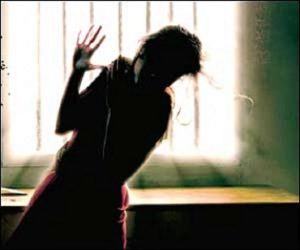KARACHI: This is the sound of a Baloch woman talking to a newspaper reporter.
If you can’t hear anything, aside from the rustling of The Express Tribune’s pages in between your hands, it’s because Baloch women are so rarely interviewed for news that their presence barely shows up on the graph. It is much the same with women from Khyber-Pakhtunkhwa (K-P).
Out of 21,949 stories surveyed in six vernacular newspapers in the two provinces in three months, women were sources of information in just 74 articles. Media researcher Sadaf Baig went through copies of K-P’s Mashriq in Urdu, Khabroona in Pashto and Wahdat in Pashto and Balochistan’s Mashriq in Urdu, Talaar in Brahvi and Nawa-e-Watan in Balochi. She also trawled through 1,035 television news stories from Khyber TV and Vsh TV. The focus was not so much on credibility of news as regularity of publication as some newspapers never hit the market.
“The findings were expected but we had not imagined they would be so low,” Baig said at the launch of the report ‘Women’s Voices in Media’ on Saturday.
In the K-P newspapers, women were sources of information for just 0.1% or 24 out of a total of 14,761 stories. In 11,723 of these stories, though, gender was not indicated, or clear. Still, if you just counted the stories in which gender was clear (3,038), women were giving information in 0.7% of them.
In the Balochistan papers, women were cited in just 50 stories out of a total of 7,188. That is 0.69%. Gender was not clear in 6,853 stories.
“If we rounded them off then women would completely disappear from the equation,” Baig said. And she was generous with the meaning of sources of information. It could have meant a woman giving a direct or indirect quote or to whom data or other information was attributed.
And when women were quoted, they were not necessarily even Baloch or from K-P, but were national leaders commenting on some issue via press releases. Also, the data was gathered at a time when the elections were hot (May 1 to July 31) and when agenda setting should have included their voices. “Women are at least if not half of the population of Pakistan,” Baig said. Thus, news is as relevant to them as to men. By failing to include more women’s voices in the news, the media have literally muted half of the population.
When women were mentioned in crime reports it was only as victims and their perspective was not added. Stories on development and education had men talking about women or for them. Healthcare stories presented them as victims or the sick in need of help. On Vsh TV, women were only mentioned as victims of natural disasters or disease. In the Balochistan papers, if women were mentioned in sports, it was in international tournaments.
Women did not fare better on TV. Out of 864 news items broadcast on Khyber TV, only 13 included women as the source of information. On Vsh TV, it was six out of 171 news items.
Panellist Muneeza Hashmi was refreshingly honest after she saw the results. “I’m not surprised at all,” she said. “I haven’t seen any improvement in Balochistan for the last 25 years.” Sometimes, the sun does break through the clouds, like in the 1970s and for a bit during the 1990s, but that is rare.
“We’ve been giving up space for money and for perks, for breaking news,” she said, referring to editorial decision making. Indeed, just the other day, the head of the biggest television channel told her how he made choices about drama serials and women in them: Jab tak wo pittegi nahi, wo chalegi nahi. But her position was tempered by a global perspective. The numbers are probably the same in countries like Sudan and Afghanistan.
The consensus at the launch was that it wasn’t enough for women to just be anchors or hosts on television, which some people argue means their voices are being heard. It was important for them to be content producers and not mouthpieces for stories men decide. “How many women have had the chance to become CEOs [of media houses],” asked Puruesh Chaudhary of the Agahi media awards.
The ground realities in Balochistan and K-P prevent the gathering of information. Shezad Baloch, The Express Tribune’s reporter in Quetta, explained how he had a hard time talking to women for stories: “You cannot directly approach a woman, no matter how liberal she appears, in this society.” Even when a woman’s child has died, it is not considered appropriate to ever directly speak to her.
It certainly doesn’t help that literacy rates and general exposure to public life are low for Baloch women. “If you want information or details, they don’t know how to speak to you either,” he said. “They will give you an answer in a ‘yes’ or a ‘no’ because they aren’t used to speaking to men in public.” And thus, a reporter’s first port of call is a male bureaucrat or official, as they are by virtue of their jobs required to convey information.
There are just two female reporters in all of Balochistan at the last count. Reporting is hazardous even for men. If a woman is educated her preference will be to work in the non-government charity sector, added Baloch. “The salaries are better and you don’t need to go out into the field.”
Today there are just two girls and seven boys in the Mass Communication department of Balochistan University of Information Technology, Engineering and Management Sciences, according to Fizza Ansari, a lecturer. “The fear starts at home,” she said at the launch, giving the chilling example of the murder of Assistant Professor Nazima Talib in 2010.
Among others, Sundus Rasheed of CityFM89, television producer Muneeza Hashmi, GeoTV’s Sana Mirza, politician Sharmila Faruqi and documentary maker Aisha Gazdar attended the launch that was organised by the Pakistan Press Foundation and Intermedia.


